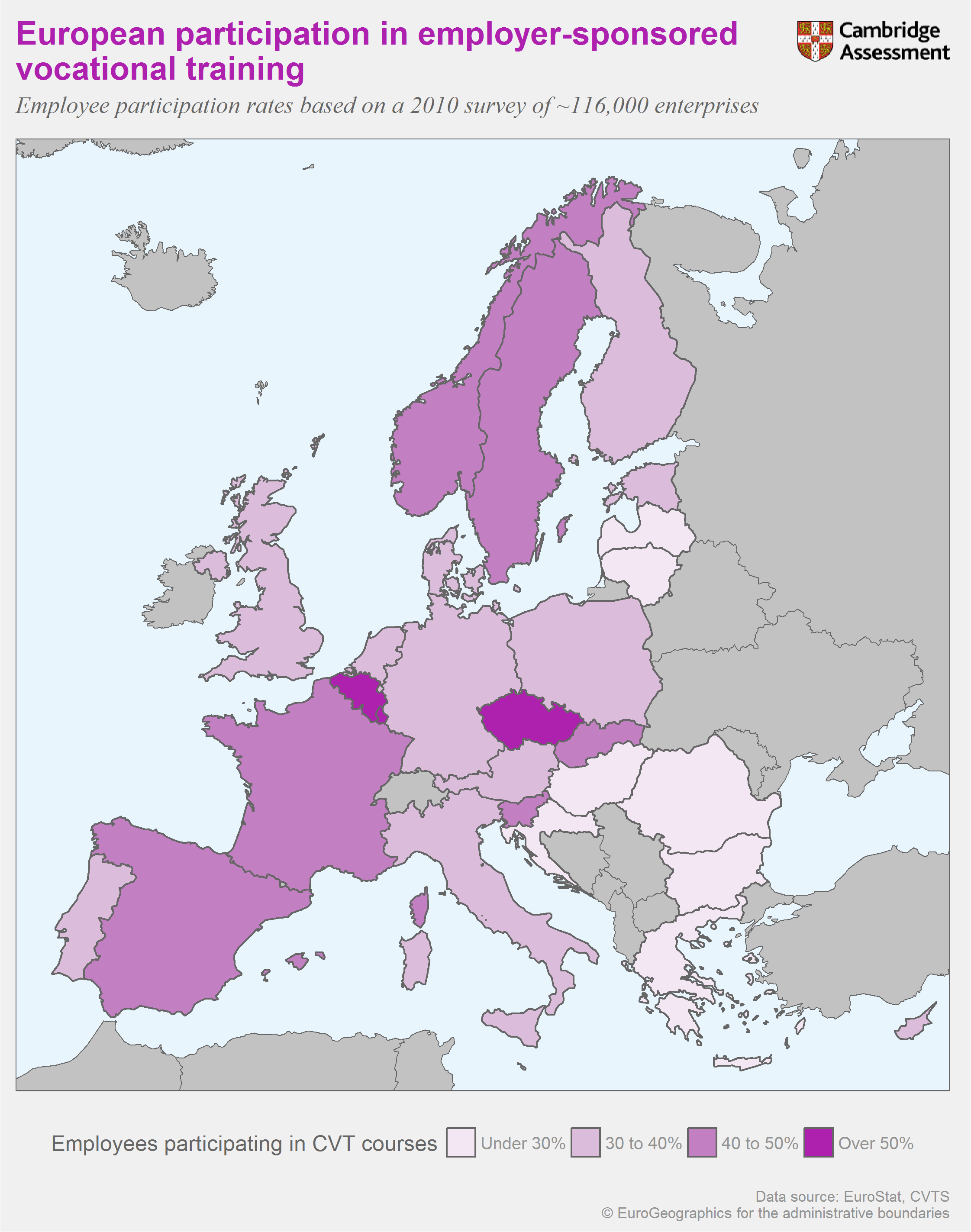July 2017
Summary
As another summer exam season draws to a close, many teenagers will now be enjoying a well-deserved rest. For many adults, however, learning does not stop with GCSEs and A Levels but continues throughout their professional and personal lives. In this Data Byte, we look at participation rates in one example of lifelong learning – employer-sponsored vocational training – and the variations that exist between European countries.

What does the chart show?
The map shows the percentage of all employees in all enterprises surveyed who participated in a continuing vocational training course in 2010, which was at least partly paid for by their employer (including the use of working time for training). Participation rates have been grouped into four categories for easier visualisation. The lowest participation rate was 16% in Greece and the highest rate was 61% in the Czech Republic; the mean participation rate, weighted by the number of survey respondents in each country, was 36%.
Employers might also choose to train their staff by providing on-the-job training. The CVTS statistics show that the mean participation rate in on-the-job training was 18%. This difference might be explained by employer perceptions of the efficiency and effectiveness of each training route.
The data were gathered in the 2010 Continuing Vocational Training Survey and are available to download from the European Centre for the Development of Vocational Training (Cedefop). This is the most recent year for which data are available; the results of the 2015 CVTS will be published later this year.
Why is the chart interesting?
Cedefop notes that “while these indicators do not claim to assess national systems or policies, they could be used to reflect on countries’ situations”. We therefore highlight some of the factors within specific countries that may explain these observed differences:
-
Greece had the lowest participation rate in this 2010 data set, but recent reforms have sought to promote vocational education. One major provider of training programmes saw the number of trainees rise by 112% between 2011 and 2013.
-
The United Kingdom had a participation rate of 31%, just below the mean of the data set. It has a well-developed vocational education market with over 200 awarding organisations, and a variety of qualifications and providers. Employers have been encouraged by the government to become more involved in skills development.
-
The Czech Republic had the highest participation rate in this chart. The country has a long-established tradition of vocational education and training, particularly in heavy industry and manufacturing. While staff training is mainly financed by employers, national government and EU funding support is available to offset these costs.
These brief examples demonstrate the diversity of vocational education and training systems across Europe and some of the actions being taken to improve the quality and relevance of such training.